If your dog hasn’t been eating, you are most likely wondering why and what to do. You might be thinking of ways to get your dog to eat, or perhaps questioning if your dog is going through something a bit serious. Dogs stop eating for a variety of reasons, some easier to fix than others. The issue can range from behavioral issues to underlying medical conditions. Before jumping the gun, let’s go over some of the more common reasons why dogs stop eating their food and what you can do to help them.
Why Do Dogs Stop Eating?
Figuring out what's keeping your dog from eating their food, can be complex. Many things can be triggering this reaction in your furry friend. Let's start at the beginning for a clearer understanding.
The loss of appetite in dogs is called anorexia or inappetence. Unlike with humans, dog anorexia can either be complete or partial.
Partial anorexia in dogs causes them to eat only some types of food, but not enough to maintain proper health. Complete dog anorexia is when dogs refuse to eat any kind of food. There’s also pseudo-anorexia, which is when dogs want to eat but can’t due to underlying issues.
The list of reasons why a dog isn’t eating can be quite long. The majority of the time, however, it can be separated into three neat categories. This is great news since it can help you spend less time wondering and more time helping them get back to their normal selves.
Medical Problems

Dogs with the following underlying medical issues will usually suffer from a loss of appetite. These medical conditions can include:
- Pain
- Tumors
- Infections
- Allergies
- Parasites
- Poisoning
- Depression
- Upset stomach
- Recent vaccination
- Acid reflux
- Neurological diseases
- Autoimmune diseases
- Pancreatitis
- Teeth, gum, or tongue issues
- Problems with internal organs
If your dog is not eating and you suspect any of these to be the culprit, it’s best to schedule a visit to the vet immediately. Without proper care, several of these medical issues, for instance, staph infections, can worsen and even be fatal.
Environmental Problems
A change in the environment can also affect a dog’s appetite. A recent move, long-distance traveling, change in weather, an unorganized feeding schedule, or stress from loud noises, like fireworks, can also make a dog not want to eat.
Consider everything before crossing it out. Maybe your dog is panting excessively because it's too hot outside. Harsh weather conditions may be the issue. Try feeding them in places where the temperature is appropriate and in comfortable settings.
Some environmental reasons are easier to fix than others. Although you can't control the weather, you can control their feeding times and car rides.
Since dogs are creatures of habit, sticking to a routine is a great idea. In most of these cases, the best approach is to try and make your dog as comfortable as possible. Just be careful not to over-coddle them as that can then turn into a behavioral problem.
Behavioral Problems
Behavioral issues like separation anxiety or sadness might be why your dog isn’t eating. Other behavioral reasons include your dog refusing to eat alone, your dog preferring to be hand-fed, or your dog wanting more table scraps and yummy treats instead.
Think about it. Why would your dog want to eat their boring food when they’re used to eating your, more delicious, leftovers? Similarly, why would your dog eat alone or eat at all when they know you’ll coddle them into it sooner or later?
Dogs love recognition from their owners, which means they'll do a lot of things for attention like waiting to be hand-fed. It can be hard not to baby or spoil your dog, but a lot of these bad habits can lead to bigger health issues down the road.
For example, treats are no big deal in moderation, but replacing food with treats is not nearly as nutritious. A dog that gets too many treats might hold off on eating their food since they know they'll get treats at some point in the day.
Some treats, more specifically human food, can even cause tooth decay in dogs. So, be sure to not overdo it in that department. If you’re concerned this might be the case for your dog not eating, simply cut down on treats and human food. A healthy dog will come around and eat their food. If they don’t have any medical problems, they won’t allow themselves to starve.
So, now you know the most common reasons why your dog isn’t eating. Now let's look at how long a dog can go without eating.
How Long Can a Dog Go Without Food?
If your dog goes a day without eating but doesn’t show symptoms like diarrhea, vomiting, or coughing, it’s probably not a cause for concern. However, it’s not healthy for a dog to go without food for extended periods.
Most dogs can go without food for three to five days. But if your dog refuses to eat for more than two days, it's best to get a vet's advice.
It’s essential always to remain vigilant about your dog’s eating habits. Aside from the mentioned symptoms and having accidents, the biggest indicator of a severe problem is a dog’s water intake. Dogs cannot survive without drinking enough water. It’s possible, but not guaranteed, for a dog to go two to three days without water.
Honestly, it's best not to risk counting the days. If you notice that your dog hasn’t had water all day, they could be dehydrated and should be checked out by a vet as quickly as possible.
Related Post: Malnourished Dog: Causes, Symptoms, & Recovery
When Should You Go to the Vet?

When a dog misses one meal rushing them to the vet is likely unnecessary. Like humans, sometimes dogs just don't feel like eating. On the other hand, if your dog's entire behavior, mood, or energy levels have changed, it could signify something is wrong.
If your dog has missed an entire day or two of eating, you shouldn’t ignore that in hopes that they will soon start eating. Also, remember that if your dog has stopped drinking water, even just for one day, you should take them to the vet immediately.
However, if they’re still drinking water, and it’s only been a day of not eating, consider first if it’s a severe problem. To better understand why your dog won’t eat, it’s best to determine the root of the cause.
Here are a few things you can do to get to the bottom of it all:
- Check their body. Check your dog’s body for parasites, lumps, injuries, or any abnormal changes in their skin and fur. You might find the reason causing their loss of appetite.
- Check their teeth. Your dog might refuse to eat because of oral issues. Check to see if they have a chipped, loose, or broken tooth. Check their gums to see if they are inflamed, as that can also be a sign of oral discomfort in dogs.
- Examine their food. If your dog isn’t eating, check their food to see if there’s anything wrong with it. Check the expiration date on the bag, and the color and smell of their food. If you think it's bad, throw it out and replace it.
- Monitor their behavior. Notice whether your dog refuses to eat everything or only some types of food--treats included. Also, see if they are drinking water. If they stop drinking water, it usually means the problem is serious, and you should take your dog to the vet as soon as possible.
- Check the environment. Could your dog have eaten something they shouldn’t have? If your dog ate something other than food, it might be the reason they stopped eating.
- Consider you might be doing something wrong. Maybe it’s time to look inwards. If you’ve been giving your dog human food or a lot of treats, they’re probably not eating in hopes of some more table scraps.
Learn more about how to care for dogs here. When in doubt, a trip to the vet won’t hurt. You should never ignore a dog that refuses to eat, although, several times, it’s an easy fix.
How to Get a Dog to Eat
Knowing how to get a dog with no appetite to eat can be a little tricky if you're unsure of the issue. If you’ve ruled out severe underlying health issues as the cause of your dog’s appetite loss, you might be frustrated they’re still not eating.
Not only is it stressful for you, but your dog is probably also feeling down. Since dogs cannot communicate what they want, you'll have to be creative in figuring them out. Here are a few things you can do to get your dog to eat.
Optimize Your Dog’s Mealtime
Create a comfortable feeding environment for anxious or active dogs. Try placing their bowls in a corner where they might feel safer.
If your dog is a ball of constant energy, try making their mealtime a game. Food-dispensing toys can keep dogs entertained during an otherwise dull mealtime experience. Energetic, or hyper, dogs can also benefit from some physical activity before eating, like walks or playtime.
Sometimes, dogs might not like the location or height of their bowls. Try moving their bowls away from sunny areas, especially if they’re outdoors.
If you have a tall dog, a raised bowl can help them eat more comfortably. If you’re using a raised bowl with a smaller dog, you should check to make sure it matches their height.
Helping a Dog With Health Issues
After a day or two of not eating, you should seek a vet’s diagnosis. Your vet might tell you it’s a phase that will pass. Other times, they will deem their diet the problem. You might have a dog with a sensitive stomach that requires a specific diet.
Other times underlying health issues might be causing your dog to lose his or her appetite. These can be difficult to spot early on, which makes preventing any condition challenging. The best thing you can do for your dog is to ensure their health is in good standing.
There are several things you can do to boost your dog's immune system, like giving them vitamins and supplements or making sure they get enough exercise. A happy, healthy dog should typically not have any issues eating regularly.
Related Post: Understanding Dog Gut Health
If Your Dog Is Not Eating, Change Their Food
Have you checked the expiration date of your dog’s food? Your dog might not be eating because their food is spoiled.
It’s also possible your dog just doesn’t like the taste of their dry kibble. After all, who can blame them? Try mixing their food with wet food to pique their interest. Switching up their kibble flavor might also do the trick!
Always opt for grain-free, organic, nutrient-rich, age-appropriate, and high-quality dog food. For more information on nutrition for dogs click here.
Helping a Dog With Behavioral Issues
If you have a stubborn dog that refuses to eat anything other than treats and table scraps, it might be time for some tough love.
First, stop giving your dog treats unless they truly deserve it. Treats and human food will not give them the nutrients they need for a balanced diet.
Give your dog one nutritious food option, and only put it out during mealtime. They might refuse to eat the first time around.
If they don’t eat after 30 minutes, take the food away and put it out again only for their next mealtime. If your dog is healthy and just picky, this reality check should get them eating again soon.
Final Thoughts on Why Your Dog Is Not Eating
At the end of the day, the most important thing is your dog's well-being. If you have any doubts about the state of their health, always let a vet know. As a pet parent, you probably have a good grasp of your dog's personality. If they suddenly stopped eating, take into account any changes in their mood, behavior, and check for symptoms.
One skipped meal might not mean anything, but don't discount a day or two of them not eating. Remember to always make sure they're getting enough water daily.
Lastly, if you have a picky eater, don't play into their groveling. Never substitute human food or dog treats for nutritious age-appropriate dog food.
Now that you know what to look for if your dog isn't eating, hopefully, you got some peace of mind and direction.

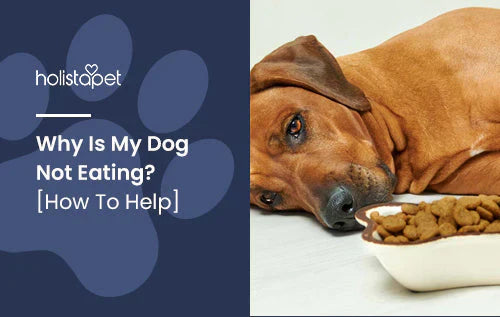
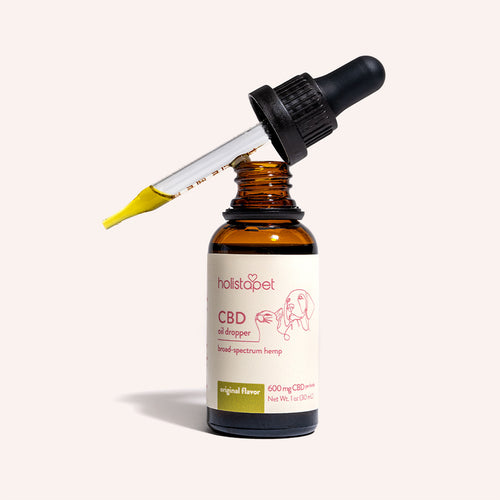 CBD Oil for Dogs - Fast Acting
CBD Oil for Dogs - Fast Acting
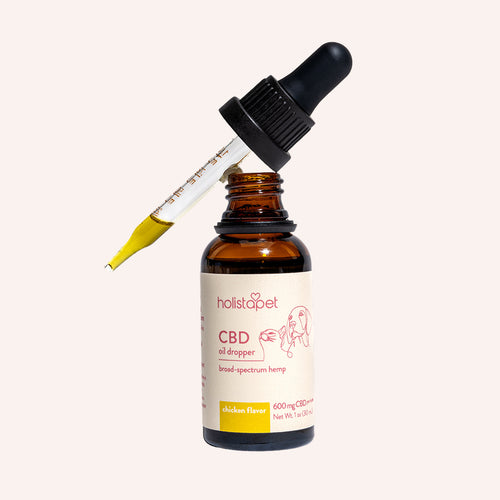 Chicken Flavored CBD Oil For Dogs - Easy Dose
Chicken Flavored CBD Oil For Dogs - Easy Dose
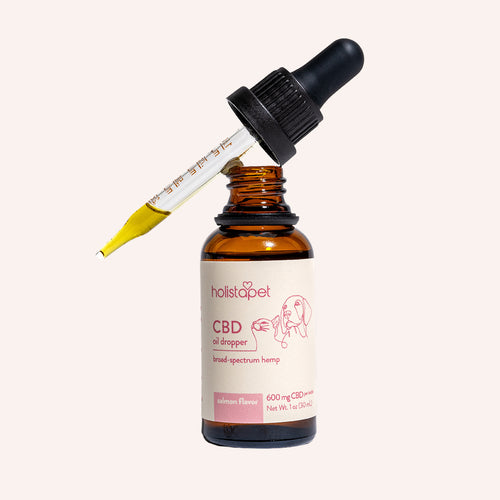 Salmon Flavored CBD Oil For Dogs - Highly Rated
Salmon Flavored CBD Oil For Dogs - Highly Rated
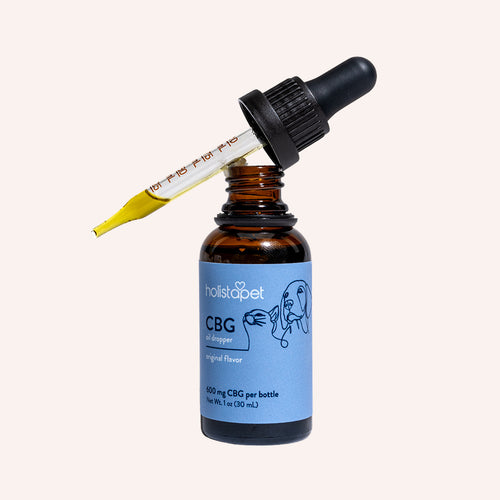 CBG Oil for Dogs and Cats - Loved by Thousands
CBG Oil for Dogs and Cats - Loved by Thousands


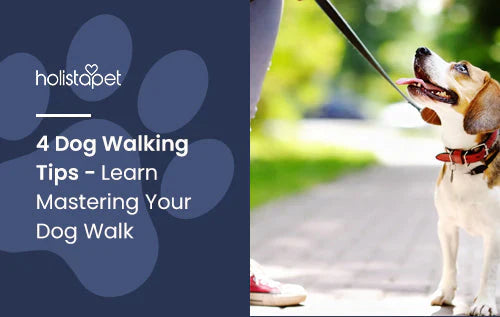
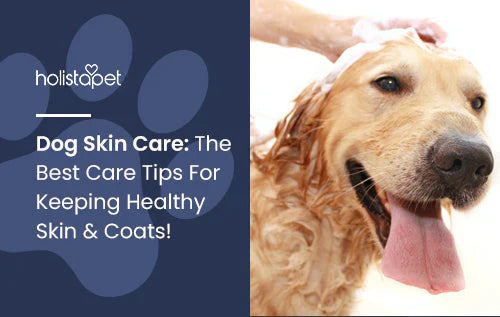

Leave a comment
All comments are moderated before being published.
This site is protected by hCaptcha and the hCaptcha Privacy Policy and Terms of Service apply.